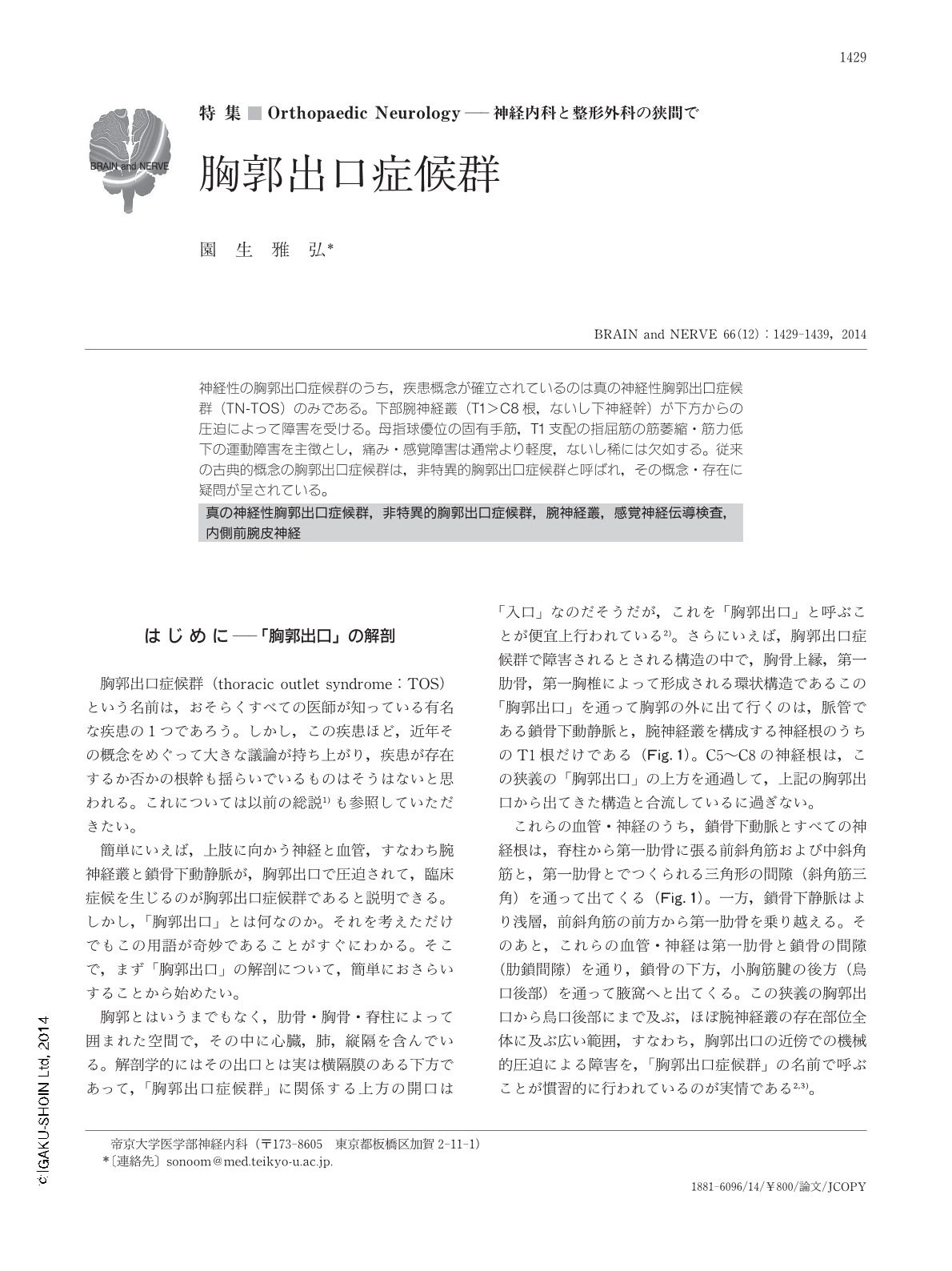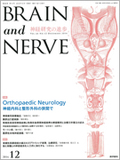Japanese
English
- 有料閲覧
- Abstract 文献概要
- 1ページ目 Look Inside
- 参考文献 Reference
- サイト内被引用 Cited by
神経性の胸郭出口症候群のうち,疾患概念が確立されているのは真の神経性胸郭出口症候群(TN-TOS)のみである。下部腕神経叢(T1>C8根,ないし下神経幹)が下方からの圧迫によって障害を受ける。母指球優位の固有手筋,T1支配の指屈筋の筋萎縮・筋力低下の運動障害を主徴とし,痛み・感覚障害は通常より軽度,ないし稀には欠如する。従来の古典的概念の胸郭出口症候群は,非特異的胸郭出口症候群と呼ばれ,その概念・存在に疑問が呈されている。
Abstract
Thoracic outlet syndrome (TOS) is a well-known disorder, but its definition has been disputed. TOS is differentiated into five distinct disorders: arterial vascular, venous vascular, traumatic neurovascular, true neurologic (TN-TOS), and nonspecific TOS. TN-TOS is caused by compression of the lower plexus (T1>C8 roots and/or lower trunk) by a fibrous band. The most frequent presenting symptoms are insidious-onset atrophy and weakness of the intrinsic hand muscles, predominantly in the thenar eminence and radial digital flexors. Numbness and sensory loss are usually present, mainly in the ulnar forearm, although severe pain or pain/paresthesia proximal to the elbow can occur; however, sensory symptoms or signs can be absent in some patients. Nerve conduction studies are pathognomonic and show the loss or severe attenuation of the sensory nerve action potential (SNAP) of the medial antebrachial cutaneous nerve. Additionally, they show a severely depressed median compound muscle action potential (CMAP) and, subsequently, a depressed ulnar CMAP and SNAP. TN-TOS is a rare disorder, although its incidence may be higher than previously believed. Hirayama disease is an important differential diagnosis. Nonspecific TOS, which is mainly diagnosed by provocative maneuvers, corresponds to the classical concept of TOS. However, this concept is now challenged and the existence of nonspecific TOS is doubted.

Copyright © 2014, Igaku-Shoin Ltd. All rights reserved.


